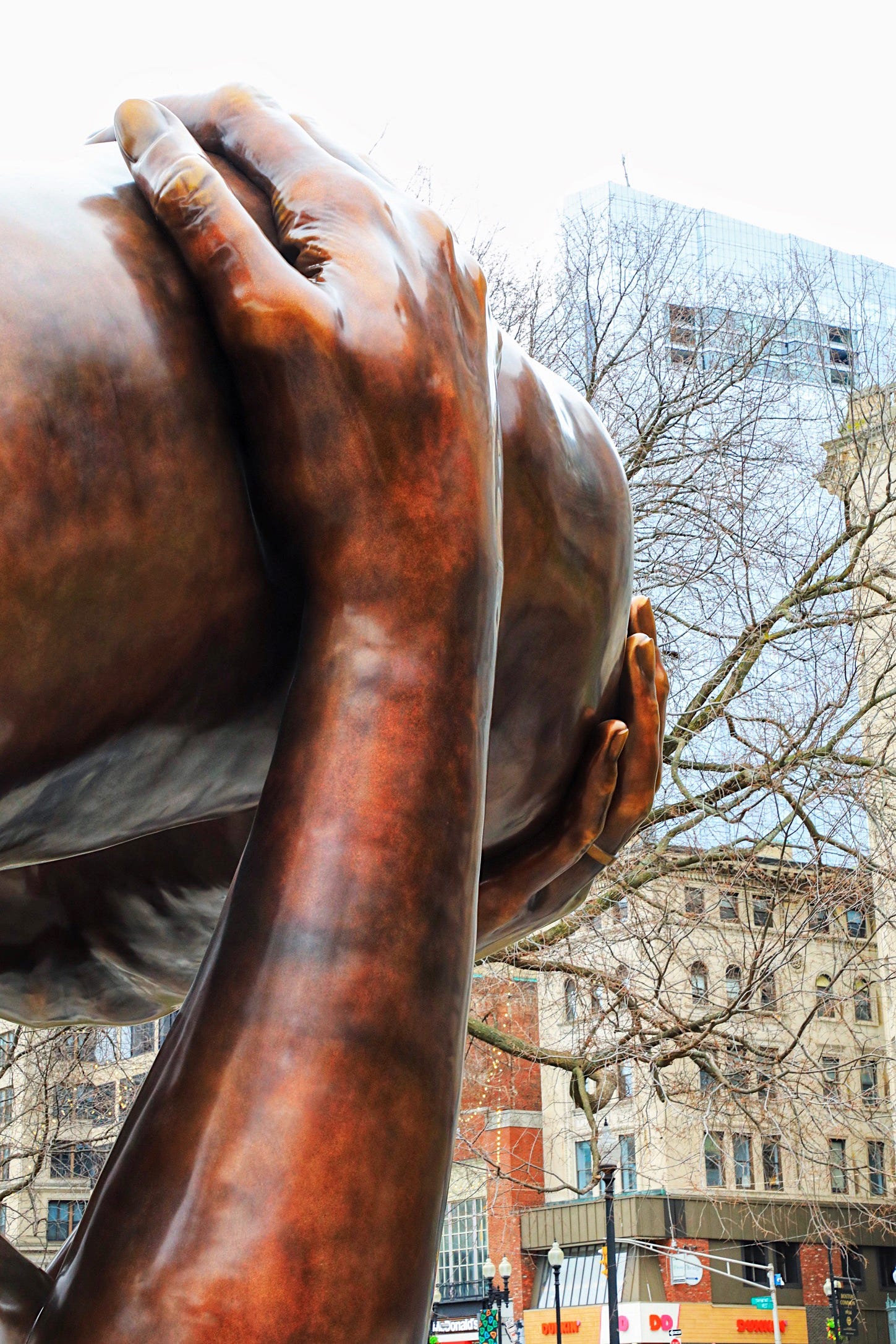Martin Luther King, Jr. was no stranger to Boston. He had earned his PhD at Boston University and met his wife, Coretta Scott here while she was on a fellowship at the Conservatory of Music. On April 23, 1965, Dr. King brought the fight for civil rights directly to the Commonwealth, marching alongside 20,000 people from the city of Roxbury to Boston Common. Centuries before British soldiers had occupied the same ground, suppressing the rights and liberties of the colonists. At this rally, Dr. King exhorted his fellow citizens to get involved in the movement by looking no further than their own racially divided and class stratified neighborhoods. More than fifty years later, Boston has inscribed Martin Luther King Jr.’s indelible legacy on the city with The Embrace memorial sculpture.
Officially unveiled last week, the piece is the first addition of public art to Boston Common and it is truly breathtaking in its scope and design. New York-based sculptor Hank Willis Thomas based his concept on a photograph of Dr. and Mrs. King hugging upon receiving the news that Dr. King had won the Nobel Peace Prize. Cast in bronze, the piece is 20 feet long, 26 feet wide, and rises two stories. It sits at the heart of a circular granite pavilion. Etched into the memorial’s stones are the names of prominent civil rights leaders from the area.
I slipped into the city early Sunday morning to visit the memorial. It was quiet, overcast and raw, the air felt pressed with the promise of snow. The Embrace came into view, shining like a copper penny on wet cement, a welcome spark in the gloom. Boston’s massive Hancock and Prudential buildings rose in the distance unable to steal the spotlight for a change.
I circled the piece, stood underneath its rounded arches and craned my neck to gaze up at the flinty clouds, pressed a palm to the freezing metal, wondering what it felt like to breathe life into this sheet of bronze to give it human properties-a shoulder, an arm, a single, graceful finger.
The Embrace is a tribute to both of the Kings’ tireless efforts for equality, an homage to their partnership. It’s a reminder of all the individuals whose sacrifices laid the foundation for the generations of activists following in their footsteps. It’s also an echo of MLK’s urgent message delivered in that same space in 1965 to keep striving to make a more humane society for all. But that’s not all it says.
Rise. Rise up alone. Rise up alongside one another. Find the way forward and rise.
Support. I see you, do you see me? I’ve got you. Our humanity unites us more profoundly than our differences can divide us.
There will be despair and defeat and failure and grief. It’s in every journey. Take comfort and solace; do your best to heal and in doing so show others that everything breaks and everything can be mended.
We are better, stronger, and more powerful in harmony than in discord.













This whole post took my breath away, and your photos...my goodness! Just stunning. I cannot wait to see this in person - thank you for going and sharing these images and the feelings they invoke. XO
Beautifully, exquisitely written and these are the best photographs that I have seen of this sculpture. Thank you for creating this piece about it. The controversy that is emerging about how people interpret this form is so gross. So immature. Thank you for giving it the spotlight that you did here. I hope the whole world sees this post.